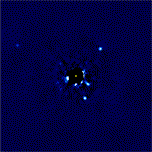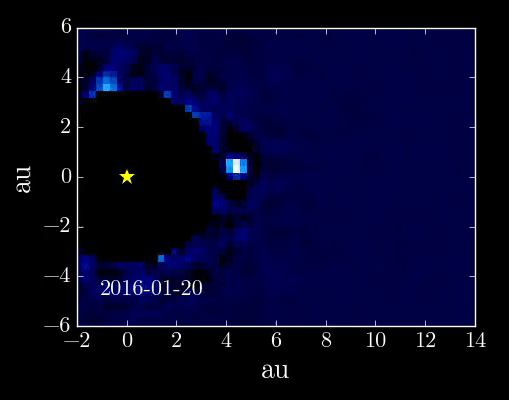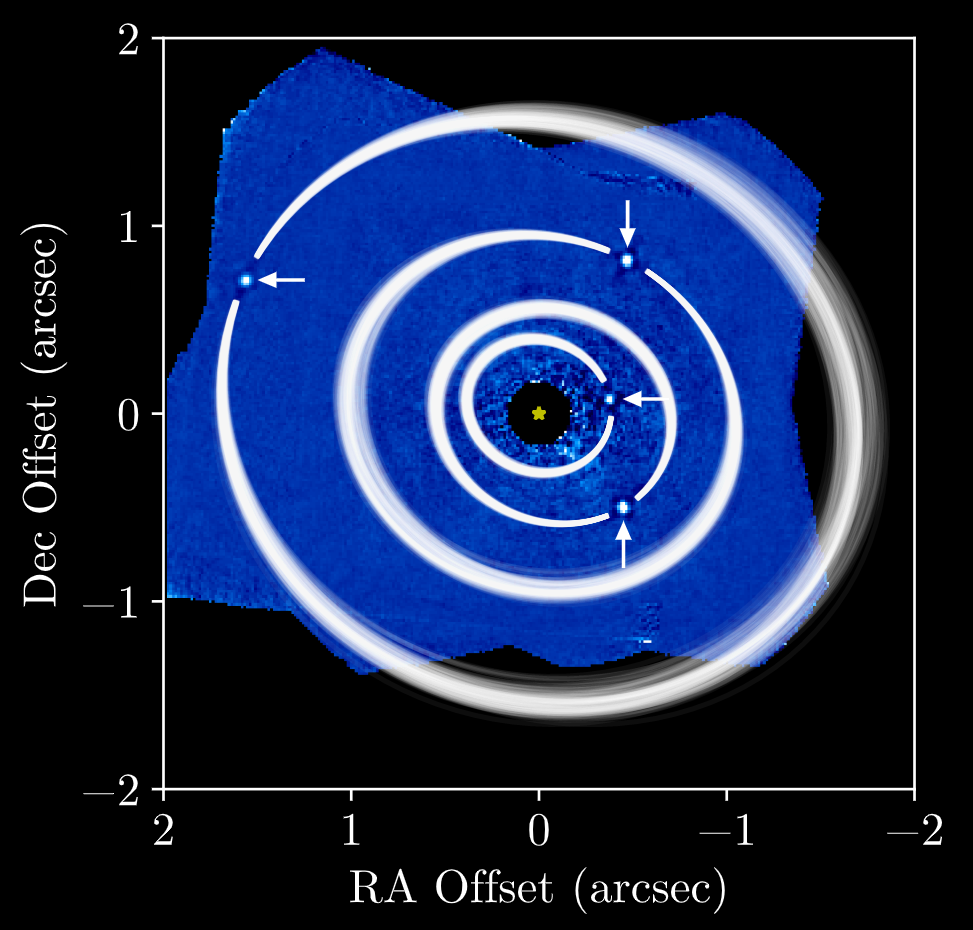About
I am an assistant professor at Northwestern in CIERA and the Physics and Astronomy department. I take images of faint exoplanets by removing the glare of their host stars using techniques such as coronagraphy, spectroscopy, and interferometry so that we can trace out their orbits and measure the properites of their atmospheres. I help develop new instruments with these capabilities and machine learning/signal processing techniques to pull out faint exoplanet signals from the data. I also am intersted in software development, especially for astronomy. I have been awarded a Sloan fellowship and Scialog fellowship for my work. I lead the BOBA Group at Northwestern.
I grew up in Dublin, Ohio, got my B.A. in Physics with a Minor in Computer Science from Cornell University, and my PhD in Astrophysics from UC Berkeley. I was previously a 51 Pegasi b postdoc at Caltech
Research
Roman Coronagraph: Paving the way for Habitable Worlds

I am one of the PIs of the Community Participation Program (CPP) for the Roman Coronagraph Instrument, the technology demonstration instrument onboard the upcoming Roman Space Telescope that aims to validate key technologies to enable the imaging of potentially habitable worlds. I co-lead the data reduction & simulations working groupm, but I am generally interested in all aspects of the project.
I hope to use the Roman Coronagraph to image a planet in reflected light for the first time. To do this, I am leading the CPP to develop a new suite of software to analyze data from photon-counting detectors in a new contrast regime. The first step is the development of a data reduction pipeline for the Coronagraph Instrument, which is actively being developed on Github.
Optical Interferometry with GRAVITY
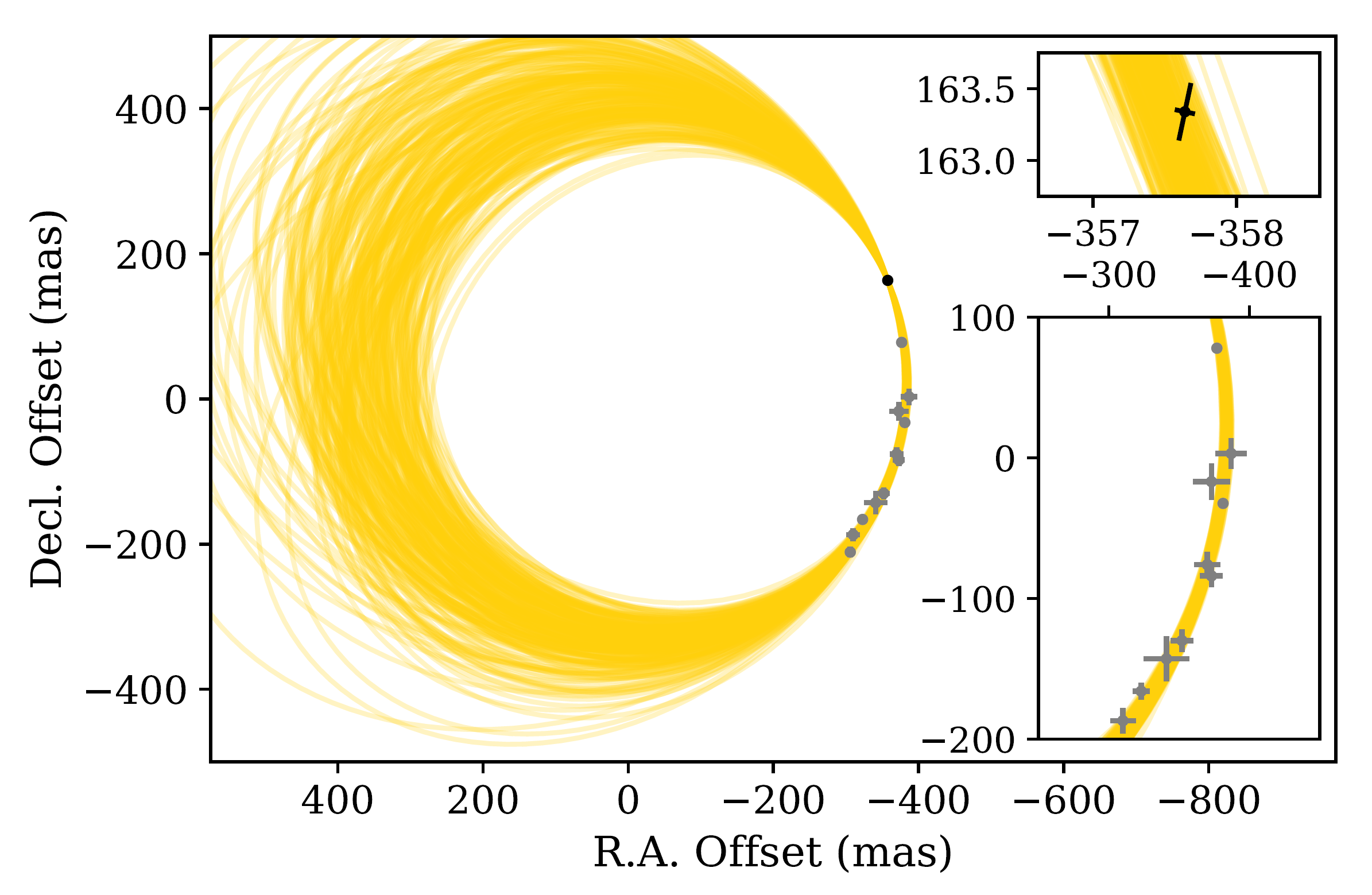
GRAVITY point in top-right plot with 200x zoom
I am working with the GRAVITY instrument, an optical interferometer that can combine light from the four 8-meter VLTs. With its ~100 meter baselines, we are capable of reaching down to 10 μas astrometric precision. We made the first ever detection of an exoplanet with this technique on HR 8799 e, achieving ten times better astrometric precision than ever before.
I am part of the ExoGRAVITY team, a multi-year VLTI large program to monitor and characterize all of the currently known directly imaged exoplanets. I am leading the astrometric effort to reveal the detailed dynamical environments of these exoplanetary systems and measure dynamical masses to constrain their formation pathways. Some early highlights include the first direct detection of a radial-velocity discovered planet (Nowak et al. 2020) and dynamically measuring its mass by measuring its perturbation on the orbit of the outer planet in the system (Lacour, Wang, et al. (2021)). We also used it to study the nature of protoplanets (see Imaging Protoplanets section below).
High Resolution Spectroscopy of Exoplanets
I am part of the team working on the Keck Planet Imager and Characterizer (KPIC), a series of upgrades to the Keck II adaptive optics system and instrument suite to enable high-resolution (R~35,000) spectra of young Jovian-sized planets. At this spectral resolution, we can resolve individual spectral lines in their atmospheres, allowing us to measure the Doppler shift of the planet, molecular abundances, and planetary spin.
In 2022, we just installed several new hardware upgrades as part of KPIC Phase II, which will further enhance the capabilities of the instrument such as characterizing closer-in exoplanets and obtaining L-band spectra. For KPIC Phase II, I designing the atmospheric dispersion corrector.
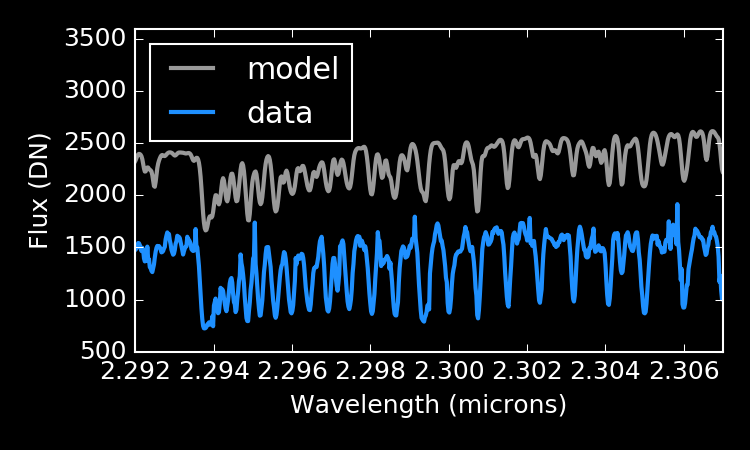
I lead the on-sky demonstration and science program of KPIC. Successfully feeding the light of a faint exoplanet into a tiny single mode fiber and through a spectrograph was no easy task, and our challenges and results are documented in this JATIS paper with some further details in this conference proceeding. In the summer of 2020, we successfully commissioned KPIC, leading to KPIC obtaining high-resolution spectra of the HR 8799 planets (see AJ article and press release). This is the first measurement of the spins of these planets, and we find that these planets may spin faster than higher mass objects.
We are now undertaking a spectroscopic survey of ~40 directly imaged exoplanets and brown dwarf companions to study their compositions, spins, and orbits on a population level. We have showed that 10-30 Juptier mass companions are broadly solar in composition, consistent with the formation via gravitational instability (Xuan et al. 2024). Stay tuned as we have several new results coming soon!
KPIC is also demonstrating the improved sensitivty of combining a high-contrast imaging system with a high-resolution spectrograph. I showed that this technique enables us to reach within a factor of 2 of the fundamental photon noise limit (Wang et al. 2024). This is a promising result, indicating that similar system on the next generation of extremely large telescopes will be able to study the atmospheres of terrestrial planets.
Imaging Newborn Protoplanets
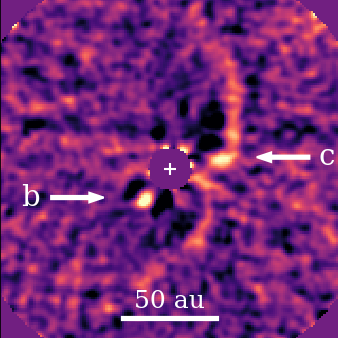
Read Wang et al. (2020) and Wang et al. (2021)
I used new technologies at Keck (better coronagraph to suppress starlight, infrared pyramid wavefront sensor for better atmospheric turbulence correction) and VLTI/GRAVITY (milliarcsecond-level spatial resolution) to study the two protoplanets orbiting PDS 70 (PDS 70 b and c). Unlike all other exoplanets, these two planets are still in the process of forming, so the true nature of these protoplanets were uncertain.
On the Keck data, I worked with Bin Ren and Nicole Wallack to subtract out the protoplanetary disk from the images so we can make unbiased measurements of their brightnesses and positions. I teamed up with Sivan Ginzburg and Peter Gao to infer the bulk properties of these planets. We found that their masses should be between 1-4 Jupiter masses (making them some of the lowest mass planets imaged to date), and they are accreting so much dust that they are shrouded by dust making it difficult to see deep into the planets' atmospheres. Our work was publisehd in this paper and featured in press releases at Keck Observatory and at the Heising-Simons Foundation.
Using VLTI/GRAVITY, we placed dynamical limits on the mass of PDS 70 b to be lower than 10 Jupiter masses, found spectroscopic evidence that we are seeing emission from the dust-shrouded atmospheres of these protoplanets, and made the first sub-au observations into a circumplanetary environment, constraining any bright circumplanary disk around PDS 70 b to be smaller than 0.3 au. Check out our paper here.
The Gemini Planet Imager Exoplanet Survey (GPIES)
I am part of the team working on the Gemini Planet Imager (GPI), a near-infrared extreme-AO system that will directly image and take spectra of young Jovian-sized planets and the debris disks in which they form.
I led the development of the software infrastructure to automate the data processing for the GPI Exoplanet Survey (see our JATIS paper). My main contributions are building the GPIES Data Cruncher (poster pdf), an automatic data reduction system for our survey, and pyKLIP (Bitbucket repo), a PSF subtraction library written in python.
The software infrastructure I developed allowed us to discover GPI's first exoplanet! In 2025, we found a second GPI planet, which is the the only directly imaged planet residing less than 100 AU that orbits a binary.
Previously, I examined how well we could measure the star that is blocked by the coronagraph mask, in particular to measure the location and spectrum of the occulted star. This work was presented in a poster and conference proceeding at the 2014 SPIE Astronomical Instrumentation conference.
I also worked on observations of AU Microscopii (AU Mic). In an ApJ Letter, we showed that the SE and NW sides of the disk are asymmetric and half different vertical extents.
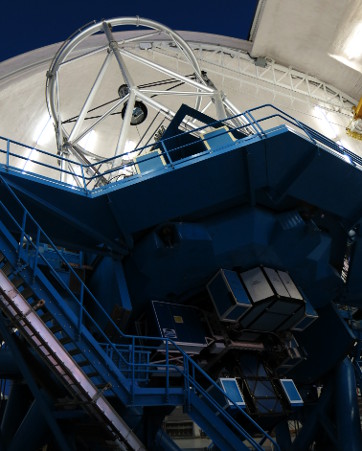
Precise Astrometry and Orbits of Exoplanets
I developed a new technique to obtain more precise astrometry of directly imaged exoplanets. This technique is based off the mathematical framework developed by Pueyo (2016) which allows us to forward model the signature of an exoplanet through the data reduction process, giving us a more accurate planet model. In addition, I developed a Bayesian framework that properly accounts for the correlated nature of the noise in the data with Gaussian process regression. You can read more about the technique in this AJ paper.
I demonstrated one milliarcsecond astrometry on β Pictoris b taken with the Gemini Planet Imager. I published a paper showing that I could fit a Keplerian orbit with well-behaved fit residuals. Our measured astrometry were 2-4 times more precise than previously published values that used same data. We also were able to improve some of the orbital parameters by a factor of 2. Using this method, we showed the probability of the planet transiting the star was ruled out at 10-σ confidence. However, the Hill sphere of the planet transited the star in 2017, and we monitored that transit to look for circumplanetary material.
I further extended my orbit characterization work when studying the HR 8799 planetary system. Even with 1-2 mas astrometry, we had short orbital arcs for the four planets, resulting in many degenerate orbital solutions. However, given that these planets are super Jupiters, many of the orbits were not dynamically stable. I took the orbit posteriors from MCMC orbit fits and performed rejection sampling on them by simulating all of them through the REBOUND N-body code and rejecting the unstable configurations. This allowed us to obtain ~5x improvement on the orbital parameters as well as place dynamical upper limits on the planet masses. You can read more about it in this AJ paper.
I am contining to monitor the orbits of these exoplanets as well as others. As we get enough data, I have started making movies of these exoplanets in motion (check them out!). I also contribute to orbitize!, an open-soruce Python package to fit orbits of imaged systems.
Publications
- Jones, N. K., Wang, J. J., Nielsen, E. L., et al. (2025) HD 143811 AB b: A Directly Imaged Planet Orbiting a Spectroscopic Binary in Sco-Cen. ApJL, 995, L41.
- Roberts, J., Thompson, W., Wang, J. J., et al. (2025) New Orbital Constraints for YSES 1 b and HR 2562 B from High-Precision Astrometry and Planetary Radial Velocities. AJ, 170, 273.
- Hsu, C., Wang, J. J., Blake, G. A., et al. (2024) PDS 70b Shows Stellar-like Carbon-to-oxygen Ratio. ApJL, 977, L47.
- Hsu, C., Wang, J. J., Xuan, J. W., et al. (2024) Rotation and Abundances of the Benchmark Brown Dwarf HD 33632 Ab from Keck/KPIC High-resolution Spectroscopy. ApJ, 971, 9.
- Noel, M., Wang, J. J., Macintosh, B., et al. (2024) Analyzing the Atmospheric Dispersion Correction of the Gemini Planet Imager: residual dispersion above design requirements. JATIS. 10, 025002.
- Wang, J. J., Mawet, D., Xuan, J. W., et al. (2024) The high-contrast performance of the Keck Planet Imager and Characterizer. Proc. SPIE, 13096, 130961X.
- Wang, J. J., Gao, P., Chilcote, J., et al. (2022) Atmospheric Monitoring and Precise Spectroscopy of the HR 8799 Planets with SCExAO/CHARIS. AJ, 164, 143.
- Wang, J. J., Ruffio, J.-B., Morris, E., et al. (2021) Detection and Bulk Properties of the HR 8799 Planets with High-resolution Spectroscopy. AJ, 162, 148.
- Wang, J. J., Vigan, A., Lacour, S., et al. (2021) Constraining the Nature of the PDS 70 Protoplanets with VLTI/GRAVITY. AJ, 161, 148.
- Wang, J. J., Wallace, J. K., Jovanovic, N., et al. (2020) An atmospheric dispersion corrector design with milliarcsecond-level precision from 1 to 4 microns for high dispersion coronagraphy. Proc. SPIE, 11447, 54.
- Wang, J. J., Ginzburg, S., Ren, B., et al. (2020) Keck/NIRC2 L'-band Imaging of Jovian-mass Accreting Protoplanets around PDS 70. AJ, 159, 263.
- Wang, J. J., Graham, J. R., Dawson, R., et al. (2018) Dynamical Constraints on the HR 8799 Planets with GPI. AJ, 156, 192.
- Wang, J. J., Perrin, M. D., Savransky, D., et al. (2018) Automated data processing architecture for the Gemini Planet Imager Exoplanet Survey. JATIS, 4, 018002.
- Wang, J. J., Graham, J. R., Pueyo, L., et al. (2016) The Orbit and Transit Prospects for β Pictoris b constrained with One Milliarcsecond Astrometry. AJ, 152, 97W.
- Wang, J. J., Graham, J. R., Pueyo, L., et al. (2015) Gemini Planet Imager Observations of the AU Microscopii Debris Disk: Asymmetries within One Arcsecond. ApJL, 811, L19.
- Wang, J. J., Rajan, A., Graham, J. R., et al. (2014) Gemini Planet Imager Observational Calibrations VIII: Characterization and Role of Satellite Spots. Proc. SPIE, 9147, 55.
- Xuan, J. W., Wang, J. J., Finnerty, L., et al. (2024), Validation of elemental and isotopic abundances in late-M spectral types with the benchmark HIP 55507 AB system. ApJ, 962, 10.
- Blunt, S., Balmer, W. O., Wang, J. J., et al. (2024) First VLTI/GRAVITY Observations of HIP 65426 b: Evidence for a Low or Moderate Orbital Eccentricity. AJ, 166, 257.
- Adams, Redai, J. I., Follette, K. B., Wang, J. J., et al. (2023) The Giant Accreting Protoplanet Survey (GAPlanetS): Optimization Techniques for Robust Detections of Protoplanets. AJ, 165, 57.
- Wang, J., Wang, J. J., Ruffio, J.-B., et al. (2023) Retrieving C and O Abundance of HR 8799 c by Combining High- and Low-resolution Data. AJ, 165, 4.
- Xuan, J. W., Wang, J. J., Ruffio, J.-B., et al. (2023) A Clear View of a Cloudy Brown Dwarf Companion from High-resolution Spectroscopy. ApJ, 937, 54.
- Llop-Sayson, J., Wang, J. J., Ruffio, J.-B., et al. (2021) Constraining the Orbit and Mass of epsilon Eridani b with Radial Velocities, Hipparcos IAD-Gaia DR2 Astrometry, and Multiepoch Vortex Coronagraphy Upper Limits. AJ, 162, 181.
- Lacour, S., Wang, J. J., Rodet, L., et al. (2021) The mass of β Pictoris c from β Pictoris b orbital motion. A&A, 654, 2.
- Ferrer Chavez, R., Wang, J. J., & Blunt, S. (2021) Biases in Orbit Fitting of Directly Imaged Exoplanets with Small Orbital Coverage. AJ, 161, 241.
- Nowak, M., Lacour, S., Lagrange, A.-M., Rubini, P., Wang, J., et al. (2020) Direct confirmation of the radial-velocity planet β Pictoris c. A&A, 642, L2.
- Nguyen, M. M., De Rosa, R. J., Wang, J. J., et al. (2020) HD 165054: An Astrometric Calibration Field for High-contrast Imagers in Baade's Window. AJ, 159, 244.
- Blunt, S., Wang, J. J., Angelo, I., et al. (2020) orbitize!: A Comprehensive Orbit-fitting Software Package for the High-contrast Imaging Community. AJ, 159, 89.
- Nielsen, E. L., De Rosa, R. J., Wang, J. J., et al. (2020) The Gemini Planet Imager Exoplanet Survey: Dynamical Mass of the Exoplanet β Pictoris b from Combined Direct Imaging and Astrometry. AJ, 159, 71.
- Nielsen, E. L., De Rosa, R. J., Mactinosh, B., Wang, J. J., et al. (2019) The Gemini Planet Imager Exoplanet Survey: Giant Planet and Brown Dwarf Demographics from 10 to 100 au. AJ, 158, 13.
- De Rosa, R. J., Nielsen, E. L., Wang, J. J., et al. (2019) An updated visual orbit of the directly-imaged exoplanet 51 Eridani b and prospects for a dynamical mass measurement with Gaia. AJ, in press.
- GRAVITY Collaboration, Lacour, S., Nowak, M., Wang, J., et al. (2019) First direction of an exoplanet by optical interferometry. A&A Letters, 623, L11.
- Ruffio, J.-B., Macintosh, B., Wang, J. J., et al. (2017) Improving and Assessing Planet Sensitivity of the GPI Exoplanet Survey with a Forward Model Matched Filter. AJ, 842, 14.
- Nielsen, E. L., De Rosa R. J., Wang, J., et al. (2016) Dynamical Mass Measurement of the Young Spectroscopic Binary V343 Normae AaAb Resolved With the Gemini Planet Imager. AJ, 152, 175N.
- Kalas, P. G., Rajan, A., Wang, J. J., et al. (2015) Direct Imaging of an Asymmetric Debris Disk in the HD 106906 Planetary System. ApJ, 814, 32.
- Macintosh, B., Graham, J. R., et al. (2015) Discovery and spectroscopy of the young Jovian planet 51 Eri b with the Gemini Planet Imager. Science, 350, 64.
BOBA Group Publications (Selected)
First Author Publications
Co-author Publications (Selected)
All Publications: ADS Link, Google Scholar
BOBA Group

Big planets: OrBits & Atmospheres
BOBA Group members generally work on imaging gas giant planets, with the goal of studying their dynamical evolution through monitoring their orbits and their bulk properties through atmospehric spectroscopy. We image and characterize planets by pioneering novel instrumentation and algorithms in high-contrast imaging.
We also engage in activites related to boba (the beverage).
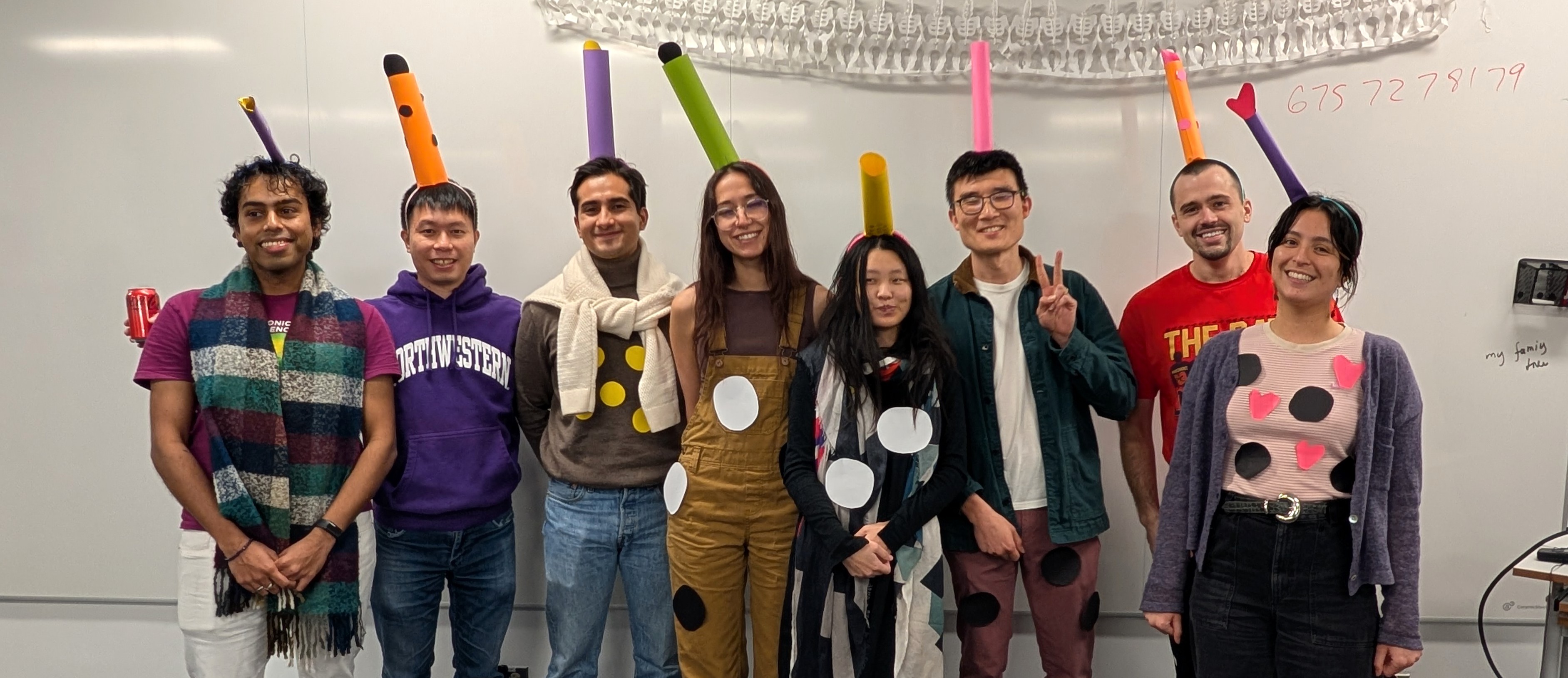
Postdocs
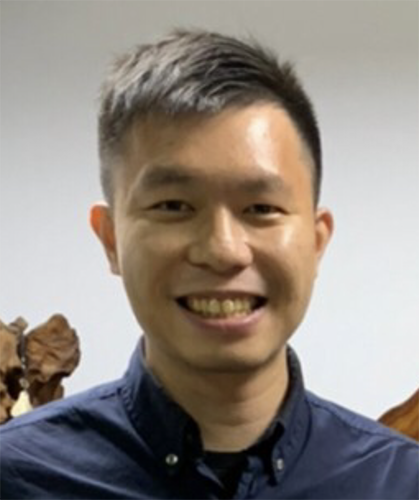
Dino Hsu
Dino works on high resolution spectroscopy of exoplanets and brown dwarafs, with focus on their spins, orbits, and atmospheric properites. He is currently analzying data from the Keck Planet Imager and Characterizer's spectroscopy survey of substellar companions in addition to developing the KPIC data reduction pipeline. He also studies how brown dwarfs and low-mass stars are distributed in our Galaxy.

Sarah Blunt
Sarah is a CIERA Fellow working on studying the orbits and atmospheres of young exoplanets through direct imaging and radial velocity techniques. Sarah works on robust data-driven methods to infer planetary properties from noisy radial velocity data of young stars. She also works on studying the orbits and atmospheres of directly imaged planets to understand their formation processes. Sarah is also the co-founder of the Code/Astro workshop and the lead developer for the orbitize! software package.
Graduate Students

Amanda Chavez
Amanda is an Astronomy PhD student at Northwestern studying the orbits of exoplanets using optical interferometry and GRAVITY. She is currently measuring the orbits of the four planets orbiting HR 8799 using the improved astrometric precision of GRAVITY. She is using the improved orbits to understand what we can infer about the resonances, coplanarity, and dynamical masses in the system. She also is part of the Roman Space Telescope Coronagraph Instrument Team and is leading the development of the astrometric calibration for the Cornagraph Instrument.
Julianne Cronin
Julianne is an Astronomy PhD student at Northwestern studying the atmospheres of directly imaged companions using high resolution spectroscopy. She is currently developing a framework to combine multiple nights of data via cross correlation in order to detect faint planets as well as trace species in planetary atmospheres. Julianne is also helping develop the data reduction pipeline for KPIC.

Rodrigo Ferrer-Chavez
Rodrigo Ferrer-Chavez is an astronomy PhD student working in Prof. Jason Wang’s group. His work is focused on detecting and characterizing exoplanets via direct-imaging with JWST. He is a member of several collaborations aiming to directly image sub-Jupiter mass planets for the first time with JWST. He also develops novel physics-based computational imaging techniques to increase the sensitivity of JWST to faint exoplanets.

Jonathan Roberts
Jonathan is an Astronomy PhD student at Northwestern working on speeding up orbit fitting and analyzing the archive of astrometry obtained by the GRAVITY instrument. He is currently performly an uniform orbital analysis of all exoplanets observed wiht GRAVITY. He is generally interested in machine learning techniques and their applications with astronomy.
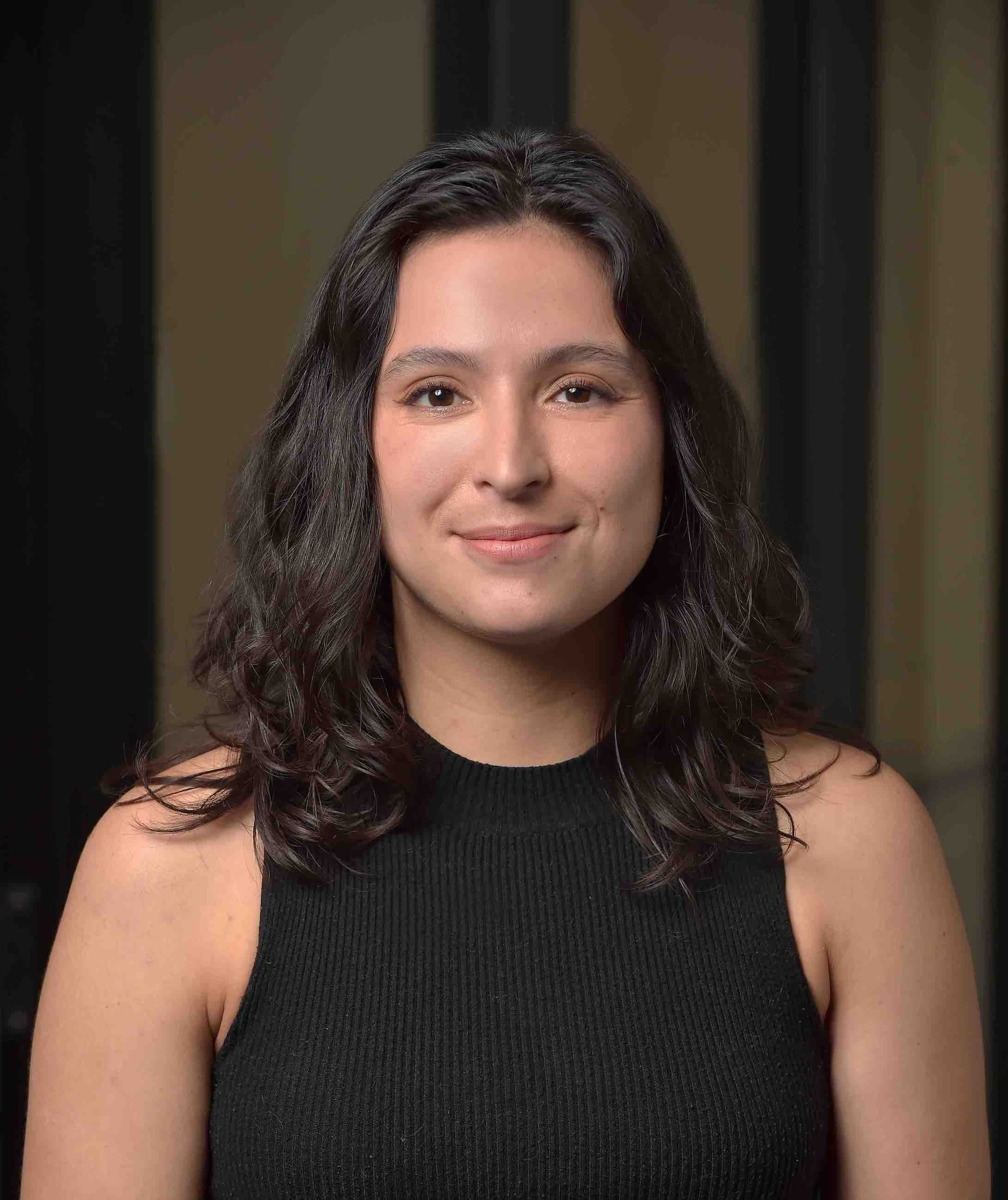
Nathalie Jones
Nathalie is an Astronomy PhD student at Northwestern working on the Gemini Planet Imager. She is doing the final, uniform processing of the original Gemini Planet Imager Exoplanet Survey, including assesing the nature of the remaining candidate companions from the survey. She will also work on the upcoming GPI2 instrument.
Pre-Graduate Students
Farrah Molina
Farrah recently is a postbacc researcher working with Sarah Blunt on adapting orbitize! to be able to utilize the brightness of planets in reflected light in orbit fits in preparation for the Roman Space Telescope.
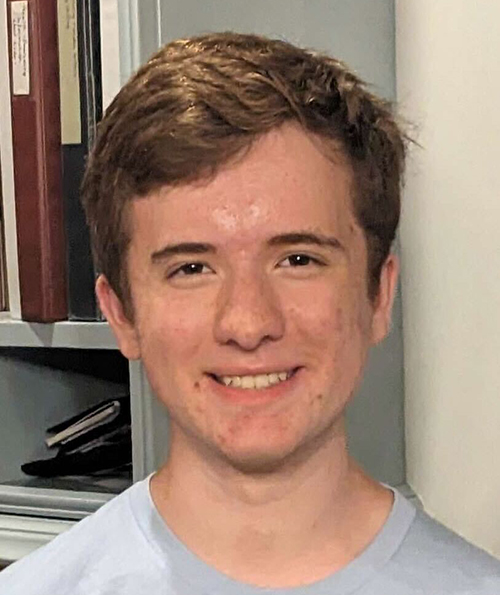
Malachi Noel
Malachi Noel is a high school student working on various projects in exoplanet imaging. He reduced the archival data to produce this 17-year time-lapse of the orbit of beta Pic b. He also characterized the long-term performance of the Gemini Planet Imager atmospheric dispersion corrector. See his JATIS paper on the GPI ADC. He is currently working on precursor observatios and data reduction pipeline development for the Roman Space Telescope.
Alan Medina
Alan Medina is a Northwestern undergraduate student working on vetting targets for the Roman Space Telescope using Gemini/NIRI data.
Brooke Okpaku
Brooke Okpaku is a Northwestern undergraduate student working on vetting targets for the Roman Space Telescope using Gemini/NIRI data.
Isabel Lockhart
Isabel Lockhart is a DePaul undergraduate student working on vetting targets for the Roman Space Telescope using Gemini/NIRI data.
Jesse Richter
Jesse Richter is a Northwestern undergraduate student working on vetting targets for the Roman Space Telescope using Gemini/NIRI data.
Jeongwoo Cheon
Jeongwoo Cheon is a Northwestern undergraduate student working on vetting targets for the Roman Space Telescope using Gemini/NIRI data.
Former Group Members

Jea Adams
Jea is a PhD student at Harvard University studying planet formation and the atmospheres of terrestrial planets. She works on transmission spectroscopy of small planets from JWST, high-resolution spectroscopy of small planets with future extremely large telescopes, signatures of planet formation with ALMA, and exoplanet imaging.

Saanika Choudhary
Saanika just finished her Master's degree at Northwestern. She was working on deep-learning algorithms for efficient orbital determination and characterizing how increased orbital coverage improves our inferences on orbital parameters. She is now a PhD student at Cornell.
Katie Scalzo
Katie is a Northwestern undergraduate student who was working on analyzing the performance of the Gemini Planet Imager atmospheric dispersion corrector across its years of operation.

Luna Guerrero
Luna was working on studying the newborn GQ Lup system. Sbe was using new GRAVITY measurements of the position of GQ Lup B to refine its orbit and study how it formed.
Allie Salyga
Allie is a Northwestern undergraduate student who worked on detecting new binary stars using cross correlation techniques on high resolution spectroscopy data from KPIC.
Teaching
Code/Astro
Together with Sarah Blunt, BJ Fulton, and Matt Hosek, I created and taught Code/Astro, a week long bootcamp for astronomers interested in learning about the best practices for software development. We have help the workshop for three years now, with over 200 participants from all over the world spanning 5 continents. All of the course materials for the workshop is available publically on Github and the 2022 workshop recordings are posted on Youtube. Stay tuned for the next Code/Astro workshop!
Northwestern
ASTRON 111
I teach an introduction to astronomy class for non-majors based on astrobiology. The class teaches about the origin of life on Earth and the prospects for finding alien life in our Solar System and beyond. The class also discusses how science is done and how it is presented to the public.
ASTRON 341/414
I teach an class on planetary astrophysics for upper-level undergraduate students and graduate students. The class covers the physics of orbits, atmosphere radiation, atmospheric circulation, planetary structure, planet formation, and planet detection. A significant portion of the class is based off a similar class taught by Eugene Chiang at UC Berkeley. Some of the homework is based on using current open-source tools in the field and is available publicly on Github.
ASTRON 441
In the Fall of 2022, I taught a graduate seminar on various skills and techniques in astronomy that aren't typiaclly taught in astrophysics classes. This class includes programming for astronomy, writing telescope proposals, reading and writing papers, giving presentations, authorship and data policy, land use, and planetary protection. The coding cotent for the course is mostly available publicly on Github.
Berkeley
Ay375
In the Fall of 2016, I co-taught the pedagogy course for first time graduate and undergraduate student instructors in the astronomy program. The course is focused more on the practical side of teaching astronomy, emphasizing how to apply techniques such as group work in astronomy discussion sections. The syllabus, lesson plans, and materials for the course are available online.
Ay7A
In the Fall of 2014, I was a graduate teaching instructor for Introduction to Astrophysics with Professor Mariska Kriek. This is the first course for astrophysics majors at UC Berkeley (mainly sophomores). I lead two discussion sections, held weekly office hours, and facilitated to weekly group homework session.
Ay120
In the Fall of 2013, I was a graduate teaching instructor for Professor James Graham for Ay120 (Optical/Infrared Astronomy Lab). I held office hours, gave mini-lectures on programming, and helped with data aquisition. Here are some technical primers I wrote up for Unix, LaTeX, and Python.
- A quick introduction to UNIX: PDF
- Example LaTeX document that demonstrates some basic functionality: .tex, PDF
- LaTeX template for lab reports: .tex
- Introduction to pip, the python package manager: PDF
- An exploration of the different ways to iterate over some data: python code
- Another useful document (written by James Graham): Poisson statistics for photons
Cornell
CS 4410/4411
As an undergrad at Cornell, I was a TA for CS4410 (Operating Systems) and CS4411 (Operating Systems Practicum) in the Fall semester of 2012. My responsibilities included holding office hours, answering the constant flood of emails, grading exams and projects, and fixing configuration issues with Visual Studio.
Code
Astronomy Software
- pyKLIP - Python library to perform PSF subtraction following the KLIP algorithm and foward modelling using KLIP-FM. Supports GPI, P1640, MagAO, Keck/NIRC2, and SPHERE data. Bitbucket repo and ASCL Reference
- orbitize! - Python library for orbit fitting of imaged systems led by Sarah Blunt. Github repo
- corgidrp - Official data reduction pipeline for the Roman Space Telescope Coronagraph Instrument. Github repo
- psisim - Python tool for simulating science cases for future exoplanet instrumentation capable of handling both imagers and high resolution spectrographs. Github repo
- Code/Astro - Course materials for a software engineering bootcamp for astronomers. Github Repo
- GPIES Data Cruncher - The automated data processing system for the GPI Exoplanet Survey. Creates PSF-subtracted data and contrast curves in real time and is ported to also run on a supercomputer to reprocess the entire survey's worth of data in a few hours. JATIS Paper
- GPI Pipeline - I am part of the team that is developing the tools to reduce and analyze data from the Gemini Planet Imager. Pipeline Documentation
- nair - Python script to calculate the index of refraction for air in the near infrared. Github page
- Fast Median Filtering - A bucket-sort implementation of Median Filtering that scales well and can handle floating point numbers. Written in Pascal for Terry Herter. Github page
Web Apps
I also run or help run several web applications.
- Where is the planet? - A website that predicts the location of most directly imaged companions for any given time. Website link
- Slack Bot for the GPIES Data Cruncher - A Slack bot that posts new automatically reduced data, retrieves archival data, tells times and jokes. Github repo
- GPIES Wiki - I created and run the internal wiki for the GPI Exoplanet Survey
- BADChat - I used to run an IRC Chat Server and Web Client for the UC Berkeley Astronomy Department. Github repo
- CCRA Homepage - I used to host the website for the Cornell Computer Reuse Association. Link
- UC Berkeley Astronomy Wiki Sites - I used to manage wiki sites for both the graduate students and the undergrads.
Microsoft
I interned at Microsoft the summer of 2012 working in the Visual Studio group. I worked on developing the automated testing framework for testing. I also participated in the DevDiv Intern Hack-A-Thon and my group's project was voted best by the full time employees. Our group used the Kinect to simulate touchscreen grestures in Windows 8. You can check out a video of our project here.
Academic Programming Projects
- P2Potato - A distributed Dropbox built upon Isis2 with no centralized data store. Github page
- PortOS - Wrote my own operating system (concurrent scheduling, TCP/IP, UDP, Routing, UNIX Filesystem)
Outreach
Exoplanet Orbit Movies
I use real footage of exoplanets taken with various telescopes and use motion interpolation to make smooth time-lapse movies. You can see them here.
My HR 8799 animation has been featured on Astronomy Picutre of the Day, Wikipedia Picture of the Day, National Geographic, Washington Post, and more. They have also been used at school both in educational software and in classroom activities.
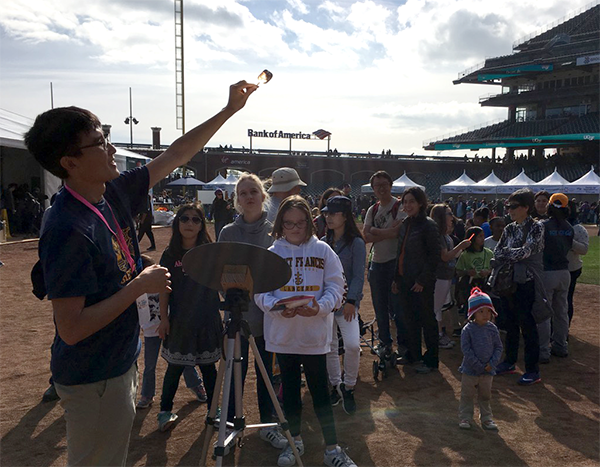
Events and Demos
I am involved in several hands-on astronomy outreach efforts.
- I lead a crowdfunding campaign that successfully rasied funds to develop virtual reality demonstrations in astronomy. Stay tuned for more!
- I am working on creating new outreach demonstrations, such as a parabollic mirror that can be used to roast marshmallows by focusing sunlight (as seen in this picture).
- I helped start up Astro Night, a monthly public lecture and stargazing series hosted by the Berkeley Astronomy department.
Education Initiatives
Outside of astronomy, I have been involved with the Cornell Computer Reuse Association (CCRA) to refurbish old computers, donate them to education and community organizations, and expand computer literacy all around the world. I also helped start the Zambia Community Education Initiative (ZCEI), a 501(c)3 not-for-profit that aims to improve education in Zambia. If you are interested in these organizations, contact me!




